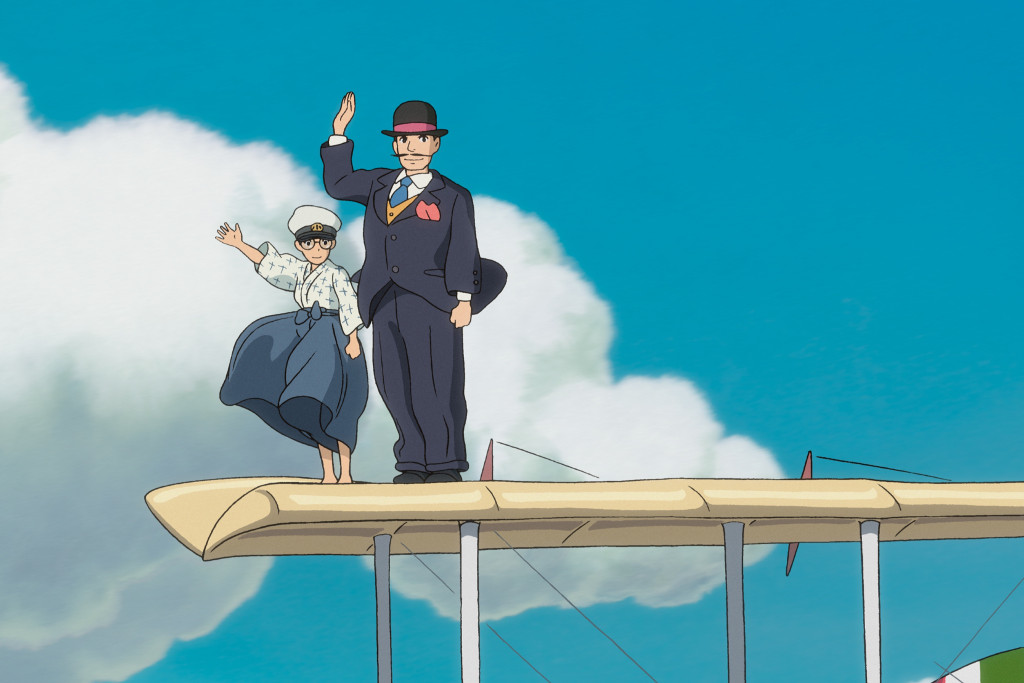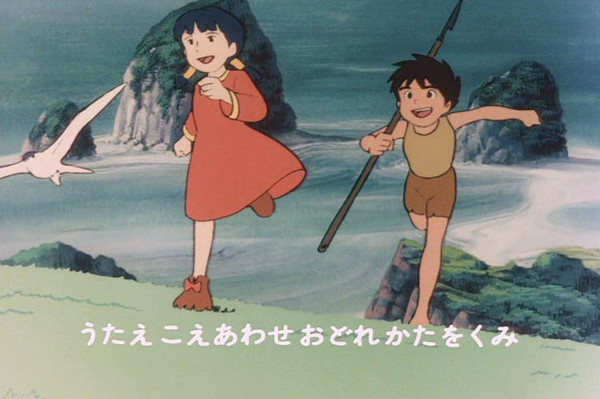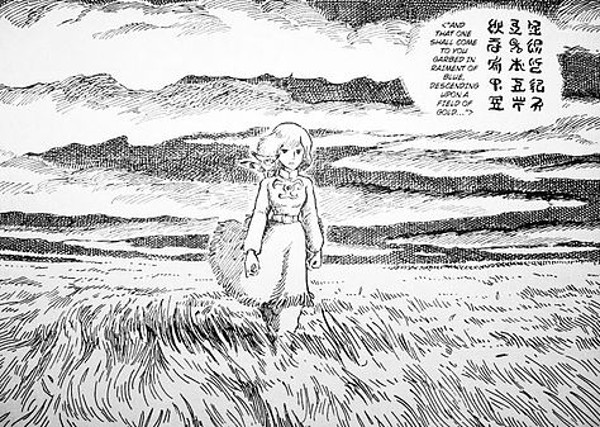A Guide To Appreciating The Films Of Hayao Miyazaki
How to talk about Japanese animation, Marxism and feminism while stroking your own chin and impressing everybody.

In September last year, Hayao Miyazaki announced that his most recent film — The Wind Rises — would be his last, and a great wailing and gnashing of teeth began. But if you’re worried you missed the boat on his career (and there’s your first mistake — it’s not a boat, it’s a plane, with Miyazaki it’s always a plane), know that it’s not too late.
To the casual film-goer, he might be familiar as a Japanese Walt Disney, a purveyor of children’s confections just charming enough for adults to enjoy. But that would understate the incredible richness of his career, and the seriousness of his thematic interests.
Miyazaki began his career at Toei Animation as a lowly animator, before eventually assuming a variety of roles, including concept artist, scene designer and writer, often in collaboration with his friend, the director Isao Takahata. His first film as director was The Castle Of Cagliostro (1979), a lively caper story adapted from the television series Lupin III, on which he and Takahata had worked as directors.
In 1985, Miyazaki used the success of his second film, Nausicaä Of The Valley Of The Wind, to start Studio Ghibli — the co-founders were Takahata and Toshio Suzuki — from which sprung the classics that made his name, like My Neighbour Totoro (1988) and Spirited Away (2001).
His latest and last film, The Wind Rises, is a fictionalised biography of aviation engineer Jiro Horikoshi (designer of the bombers used by Japan in WWII). In contrast to his previous film, the whimsical fantasy Ponyo (2008), The Wind Rises is an adult movie, with some complicated things to say about genius, love, warfare, and moral responsibility.
Since you probably don’t want to be the only one amongst your friends who can only offer “Boy, that guy sure likes planes, huh…” when everyone else is stroking their beards and musing about how the film both deviates from and enriches upon Miyazaki’s oeuvre, here’s a few talking points to help you get a handle on the man’s genius.
–
Marxism
Miyazaki studied economic and political science at Gakushuin University in Tokyo, and he was an official in the animation worker’s union at Toei. His early work displays a sort of Marxist affinity for communal labor and worker solidarity.
In Castle In The Sky (1986) — the first Studio Ghibli feature — the adventure kicks off in a mining community, where some local workers have taken custodianship over an abandoned local mine and are attempting to resuscitate it. These brief early scenes are infused with a sense of the romance of proletariat life that wouldn’t look out of place in Patricio Guzman’s The Battle Of Chile or any documentary account of a 20th century socialist movement.
This sensibility has its most full-blown expression in Future Boy Conan, a TV series from 1978 that is 26 episodes of pure, unfiltered Miyazaki. The story follows a young boy, Conan, who grows up on an isolated island in the wake of a man-made environmental cataclysm. When a young girl, Lana, washes up on his beach, followed shortly by a band of dastardly kidnappers, Conan makes his way into the world to rescue her and find a new home. He finds that the remaining human population is mostly split between Industria, a fascist industrial state, and High Harbour, a peacefully communist state whose happy workers tend the land in bucolic joy.
There’s a remarkable narrative detour at the halfway point of the series. Having made their way to High Harbour, Lana introduces Conan and his friend Jimsy (another orphaned boy) to the joys of communal living. But Jimsy, who is selfish by temperament, takes some time to adjust. That’s right: a full hour or so is devoted to the psychological difficulties (and rewards!) of integrating oneself into a communist state.
The Wind Rises — focusing as it does on the work of a solitary genius — contains none of this feeling for communal labor. Indeed, critics have made a strong argument against its refusal to admit that Jiro’s planes were built by Korean and Chinese slave labor, a potentially troubling omission given Miyazaki’s earlier interest in workers’ rights.
Miyazaki has admitted that he drifted away from Marxism in the early ’90s, but behind the scenes (apparently) his commitment to solidarity didn’t wane. Here’s a clip from the making of Spirited Away, in which Miyazaki prepares ramen for his employees.
–
The Natural World
Miyazaki’s films are also threaded through with a fierce streak of environmentalism or rather a reverence for the natural world, from the flourishing ocean habitat of Ponyo to the lush forests of ancient Japan in Princess Mononoke (1997).
A New Yorker profile quotes Miyazaki as cheerfully looking forward to the imminent breakdown of human civilisation: “Money and desire — all that is going to collapse, and the wild green grasses are going to take over.” His work often depicts the natural world regenerating in the face of the destruction wrought by industrialised society: there’s the flooded earth of Future Boy Conan, the abandoned floating city of Laputa in Castle In The Sky, and the grim, post-apocalyptic lands of Nausicaä.
Nausicaä is set in a post-apocalyptic world that has been ravaged by industrialised weaponry. In this adventure, the titular feisty princess leaves the confines of her peaceful kingdom (populated, again, by a labor-loving agrarian community) and contends with the expansionist empires that threaten to tip the world into war, as well as the metastasizing ‘Sea of Corruption’, a vast forest of toxic mould and insects that is rendering the environment increasingly uninhabitable.
Nausicaä eventually learns that the Sea of Corruption is actually a mechanism of purification, leeching the toxic residues left by the weapons out of the earth’s surface. This is the classic Miyazaki view of nature, a Gaia-like self-governing system that is utterly, even dangerously, indifferent to the needs of humans, and that reaches its fullest potential in the absence of human interference.
The Nausicaä film is actually only an adaptation of the first sixteen chapters of Miyazaki’s manga of the same name, an epic project that he finished publishing in 1994. The manga Nausicaä is an even more complex representation of Miyazaki’s environmental themes. At its climax, Nausicaä learns that the Sea of Corruption is actually a product of the scientists of the industrial civilisation that ruined the world. Anticipating the final collapse, they had designed a system to purify the earth from the damage they had wrought, and preserved their consciousnesses in a vast temple in order to manipulate the remaining human societies and hasten the earth’s regeneration. Appalled at their arrogance, Nausicaä destroys their temple, and leaves humanity to weather the earth’s great transformation alone, even at the risk of extinction.
Nature’s capacity for destruction rears its head again in The Wind Rises, as the earthquake that strikes Tokyo in 1923. But Miyazaki also seems to formulate his vision of nature’s steamroller indifference to human needs in a new way, as a kind of world-historical spirit that is driving Japan and Germany inexorably toward world war. In this way, Jiro’s maxim — taken from the epigraph that opens the film: “The wind rises, we must try to live.” — is an echo of Nausicaä’s resolution that humanity must submit itself to the mercy of the environment; a recognition that in the face of natural forces beyond our control, we can only try to survive.
–
Feminism
Where Disney only recently got around to investing the princess protagonists of its animated offerings with some genuine independent spirit (seriously, Frozen is really good), Miyazaki has quietly been creating some of the most well-rounded female characters in the animated corpus.
It didn’t start that way, though. His early work suffers from an excess of bland female love interests. Clarisse, the serial-kidnapee in The Castle Of Cagliostro is mostly defined by her helplessness in the face of abduction, and by her willingness to fall in love with the roguish thief, Lupin. Lana, in Future Boy Conan, has little memorable dialogue beyond shouting “Conan!” in various hues of distress.
Nausicaä is the first Miyazaki film to feature the kind of strong female personality that later dominated his work. Nausicaä may be a princess, but her authority over her people is well earned by her obvious excellence in the fields of fighting, science, crop cultivation, and stopping wars. There’s still a kind of Disney-esque aspirational fantasy to the characterisation here — a princess who is loved by her people and is great at everything! — but his subsequent protagonists hew closer to life-size.
My Neighbor Totoro, a gentle story about two young girls who move to the country and discover some local forest spirits, was the first step in this direction. The film is notable for its lack of overt conflict (there is no villain), and for the naturalistic approach it takes with the two girls’ personalities.
1989’s Kiki’s Delivery Service, Studio Ghibli’s first big hit, was Miyazaki’s second film in a row to focus on a young female protagonist. In this coming of age story, Kiki, a witch, turns 13 and embarks on a traditional year away from home. Alone in a new city, she struggles to make friends, master her powers, and overcome depression.
The film contains few of the flights of fantasy Miyazaki is known for (once again there is no villain); rather, it’s a quietly sympathetic look at Kiki’s journey into self-confidence. Spirited Away (2001) and Howl’s Moving Castle (2004) similarly focus on a young girl (or woman’s) journey into self-assertion, although under rather more fantastical circumstances.
In a 1991 interview (reprinted in his book Starting Point: 1979-1996), Miyazaki said that his ambition in creating children’s films is to “depict the reality of present-day children in Japan — including their desire”. This is one way to understand the quality of the female characters in his work. Unlike many American films, he doesn’t want to portray his female protagonists in a certain way (positive or not), but rather he is interested in capturing something real about a young person’s wants and needs — their psychology — that isn’t concerned with gender roles.
Proponents of this feminist viewpoint in Miyazaki’s work will find much to chew over in The Wind Rises. Jiro’s willful younger sister, a minor character, takes an off-screen journey to becoming a doctor, but the central female protagonist is Naoko, a tubercular young woman who falls in love with Jiro, and eventually becomes his wife.
Naoko is, in her own way, as self-assertive a figure as any in Miyazaki’s canon. Although chronically ill, she nevertheless pursues Jiro with decisiveness, even abandoning her mountain sanatorium to play dutiful spouse to him as he closes in on the design that will make his legacy. This image of wifely submission is rather uncommon in Miyazaki’s films, but it eventually takes on a melancholy edge, as the sacrifices Naoko makes to facilitate her husband’s genius take an increasing toll on her health.
–
The Wind Rises may be his last feature film as director, but there’s still a whole wealth of Miyazaki-related stuff to explore. Not including his extensive work as a writer on much of Ghibli’s output, there’s his early TV efforts (including Sherlock Hound, a Conan Doyle adaptation that casts the Great Detective as a dog), his short films (many of which, tragically, only screen at the Ghibli Museum in Tokyo), and the films of his collaborators and partners in Ghibli, especially co-founder Isao Takahata (whose films are more cerebral, though equally rich).
In a lovely confluence, Studio Ghibli takes its name from a term used to describe the Mediterranean wind that rises up from the Sahara and sweeps down over Southern Europe. The wind is still rising. Miyazaki’s work lives on.
–
The Wind Rises is now showing in cinemas nationally.
–
James Robert Douglas is a freelance writer and critic in Melbourne. His work has been found in The Big Issue, Meanland, Screen Machine, and the Meanjin blog. He tweets from@anthroJRD


